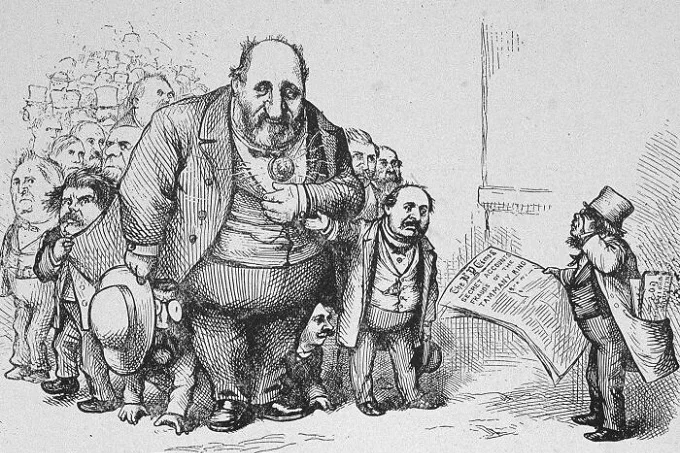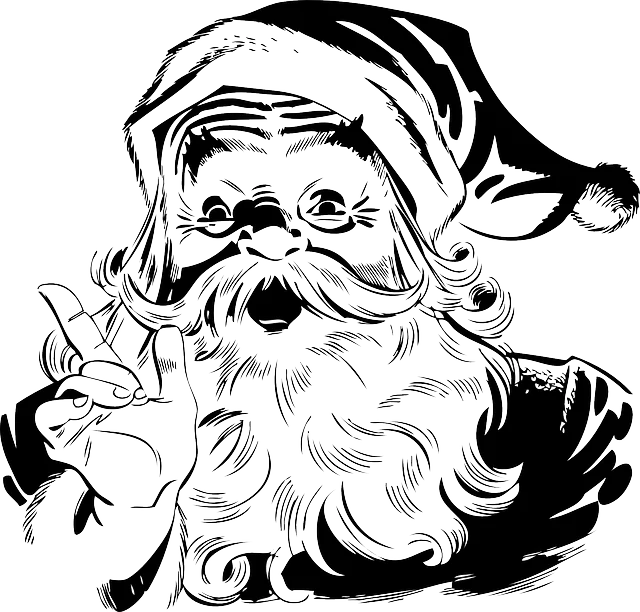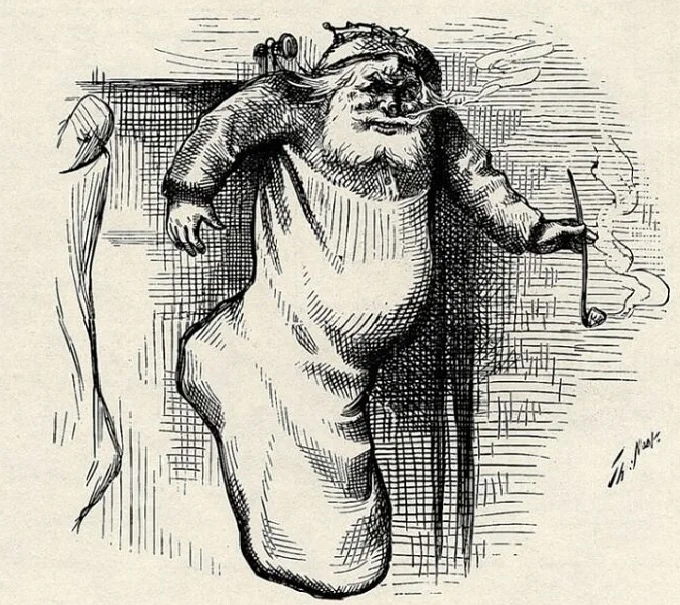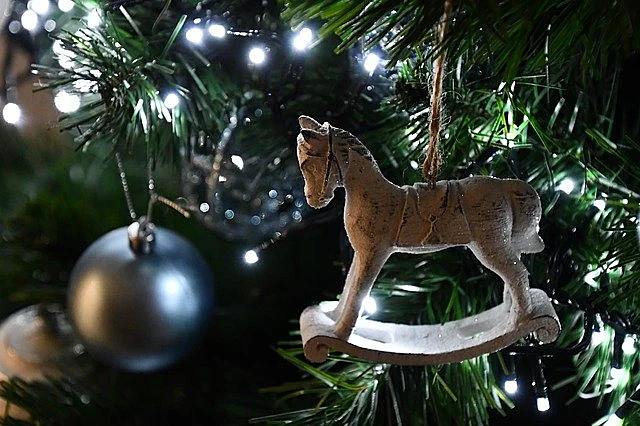Is Santa real and how does the iconic image of Santa Claus appear?

One of the most iconic and well-known Christmas icons is Santa Claus. Many consider the bearded gift-giver in a red outfit with a fluffy white beard to be a true magician, anxiously anticipated by youngsters all over the globe.
Further in this article, we’ll talk about how the famous picture of the Western European and North American magical persona came to be, and who created it.
Brief Biography
Thomas Nast was born in Bavaria, Germany, in 1840. When he was young, he immigrated to the United States with his family. Thomas began to paint at an early age, excluding almost everything else. While living in New York City, he dropped out of school in favor of studying drawing at the National Academy of Design. At the age of fifteen, he landed his first job as a professional illustrator for Frank Leslie’s Illustrated News.

Part newspaper and magazine, this popular new type of publication relied heavily on illustrations to clarify and enhance the written content. In the days before quick and easy photography, periodicals of all stripes hired artists to sketch current events, and Thomas was one of the very illustrators involved.
He was most active in political commentary during his long career. A staunch supporter of the Republican Party, African American rights, and abolitionism, he had to vigorously attack everything he saw as corrupt and immoral in nineteenth-century American politics. At times his satire was blatantly biased, especially against the Irish and Catholics, using many of the stereotypes prevalent at the time.
His illustrations greatly impacted the world around him and his people, and there are rumors that his cartoons may have influenced elections. He is often credited with creating the American political cartoon.
During his career, Thomas created or popularized the already familiar images of the Democratic donkey, the Republican elephant, Uncle Sam, and Columbia (the female personification of America), thereby generating provocations and much controversy about it.
Creative way
In 1862, he began working for Harper’s Weekly, eventually publishing his most famous and influential work. Thomas, a political cartoonist for Harper’s and a staunch abolitionist, created a flood of images in support of the unions and against the Confederation throughout the American Civil War. In fact, Ulysses S. Grant later praised Nast for his powerful support for the Union, stating that Thomas “did as much as anyone else to keep the Union and end the war.”
After the war, the artist continued to write often sarcastic political commentaries. He especially targeted the corrupt New York politician William “Boss” Tweed, the head of the influential Tammany Hall political group.
Threats of retaliation from Tweed and his cronies forced Thomas and his family to leave New York in 1871. They settled in Morristown, New Jersey, where he lived most of his life. The Macculloch Hall Historical Museum, located across the street from Nast’s former home, still houses the world’s largest collection of his work.
However, Nast continued to contribute to Harper’s Weekly and other New York publications until the 1880s. Despite his political activity, Thomas became famous all over the world, forever changing Christmas, creating a modern image of Santa Claus.
Origins of Santa Claus

Santa Claus, to whom they leave milk and cookies on Christmas Eve in many countries, is largely a nineteenth-century phenomenon. However, his roots go deeper than that. In present-day Turkey, its clearest early ancestor was St. Nicholas, a fourth-century A.D. bishop from Myra. For this reason, Santa is still sometimes referred to as St. Nick. The patron saint of children, among other things, St. Nicholas is also associated with generosity. He is believed to have donated a dowry for three impoverished women and brought murdered children back to life. He is usually depicted wearing a church vestment and holding a staff (bishop’s staff).
Many saints gain followers. And not at all surprisingly, one of them, known for saving children and young women, has gained widespread popularity. Initially, children hoped to receive gifts from him on St. Nicholas Day, celebrated on December 6. He was especially popular in Holland, even after much of the country had abandoned Catholicism in favor of Protestantism.
Another ancestor of Santa Claus is the English character Santa Claus, also known as Sir Christmas, who most likely descended from pagan traditions in the pre-Christian British Isles. Dressed in a mantle, with a crown of holly on his head, Santa Claus was similar to Dionysus, who liked to throw wild parties. This is because, until the 19th century, Christmas celebrations were less about presents and family and more about drinking, feasting, and carousing. Some of this exuberance probably survived from the pagan winter solstice celebrations. Early Christmas was often not so religious, to the point that the Puritans briefly banned the celebration of Christmas during the English civil wars of the mid-1600s.
In the 19th century, British and American culture turned Christmas into a wholesome holiday that is still celebrated today according to new canons. Charles Dickens’ 1843 classic “A Christmas Carol,” for example, refers to this period, in part due to new nineteenth-century views of the centrality of family and home life and a view of childhood as a time of innocence and joy.
When Dutch settlers arrived in the American colonies, they brought with them their love of Sinterklaas, as they called him. In the time it became popular in New York, where the influence of the so-called Knickerbockers, old New York families descended from the first Dutch settlers, was strong. Washington Irving mentioned him in his 1809 book A History of New York, a fictional work on the Dutch history of New York.
In 1822, the American writer Clement Clark Moore described Santa Claus/Saint Nicholas in detail in his poem “A Visit from Saint Nicholas.” Moore, Irving, and other American fans worked together to create an image of Santa, describing him as a chubby, elf-like creature driven by a team of reindeer pulling his sleigh on Christmas Eve.
Canonical Santa Claus
Thomas drew on this nineteenth-century image when he began drawing Santa for Harper’s Weekly. He published his first illustration of Santa Claus in his first year with the magazine. His January 3, 1863 cover depicted Santa Claus handing out gifts to Union soldiers.

This image combines holiday sentiment with political messages. In this way, Thomas chose to show and make it clear that Santa supported the Union rather than the Confederacy. When Santa shows the soldiers a devil in a box that appears to be hanging from a noose, the doll has the face of Confederate President Jefferson Davis. Another illustration created by Thomas in the same issue, showing a soldier in a field with his wife and children at home. Santa Claus and his reindeer fly over the top of the image and down the family chimney on the left.
Nast did thirty-three Christmas illustrations for Harper`s from 1863 to 1886, and almost all of them depict Santa. The now-canonical and familiar Santa Claus appeared during that same period – round-faced, red-nosed, pipe-smoking, with white hair, a beard, and the iconic costume.
Thomas’s illustrations appeared as black and white woodcuts, so they have nothing to do with the color of Santa’s clothes. However, one can find many versions that have been hand-painted by their owners.
Thomas’ images contain the first known references to Santa Claus having a toy workshop and living at the North Pole. Over the years, he depicted Santa making toys, separating naughty children from nice ones, sneaking gifts, and more.
Later images showed him interacting with children. The artist’s work gave Santa Claus life and personality rather than just using him as a symbol. In his other Christmas illustrations, children wrote letters to Santa, tracked his route, and even called him on the phone.
Thomas’s Christmas drawings were often larger and more detailed than his other work. Although the illustrations sometimes contained coded political elements, they focused on childhood, sentimentality, and the importance of family more often than not. His wife and children appeared in occasional roles, and their home in Morristown often served as a backdrop. Thomas’s most famous image of Santa Claus, which continues to adorn Christmas cards and decorations, is his old jolly Santa Claus from 1881, carrying an armful of toys.
Thomas Nast’s Santa Claus lives on to this day. More recent images, from Norman Rockwell’s Saturday Evening Post and Haddon Sandblom’s illustrations for Coca-Cola to the ubiquitous Santa Clauses in malls and Christmas decorations, go back in part to Nast’s vision, filled to the brim with alluring warmth and vivid detail.
Even more than a century after the artist’s death, the image he once invented is considered canonical today, and many creatives are happy to interpret it in their own way, creating exciting new stories with the kindly bearded old man in the red suit.




